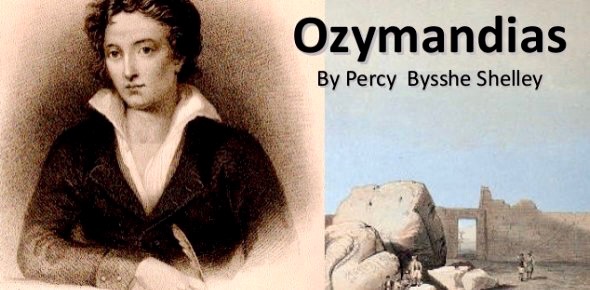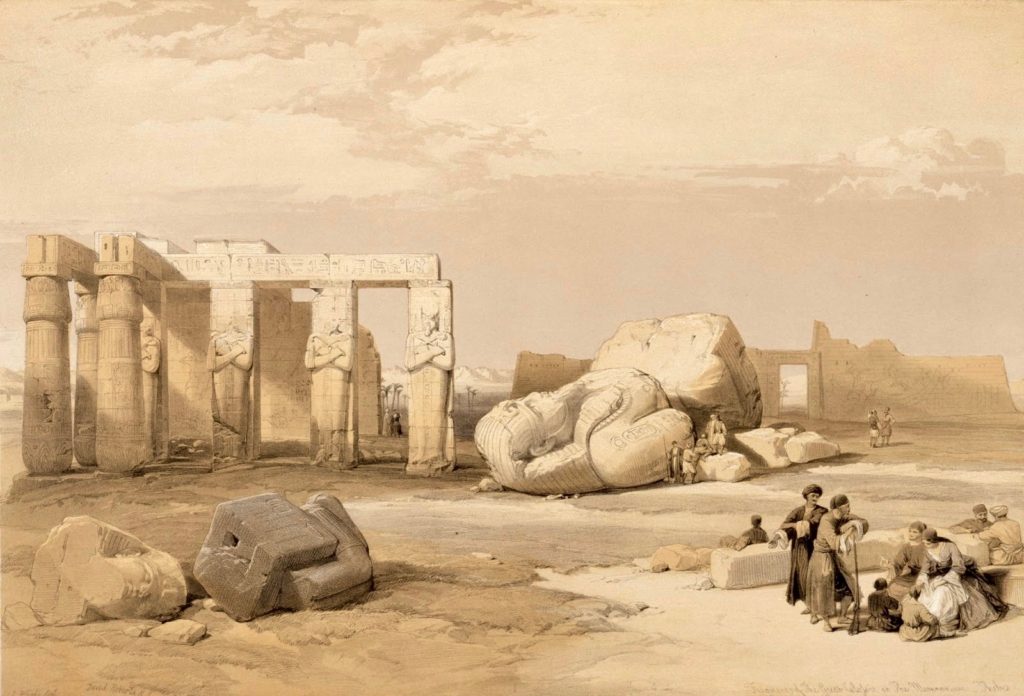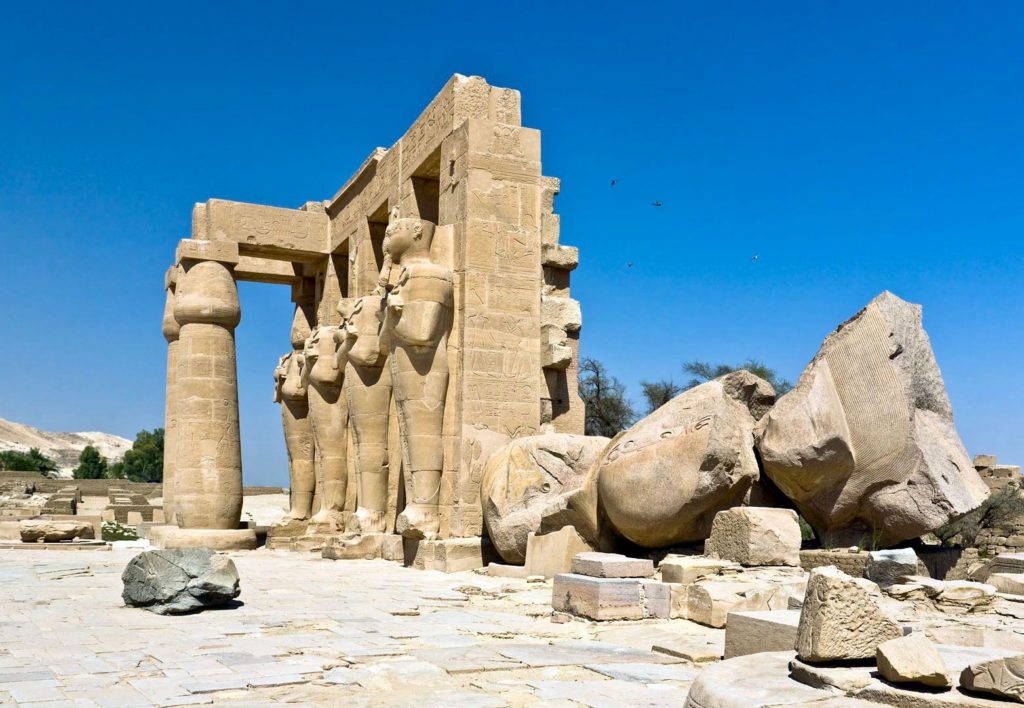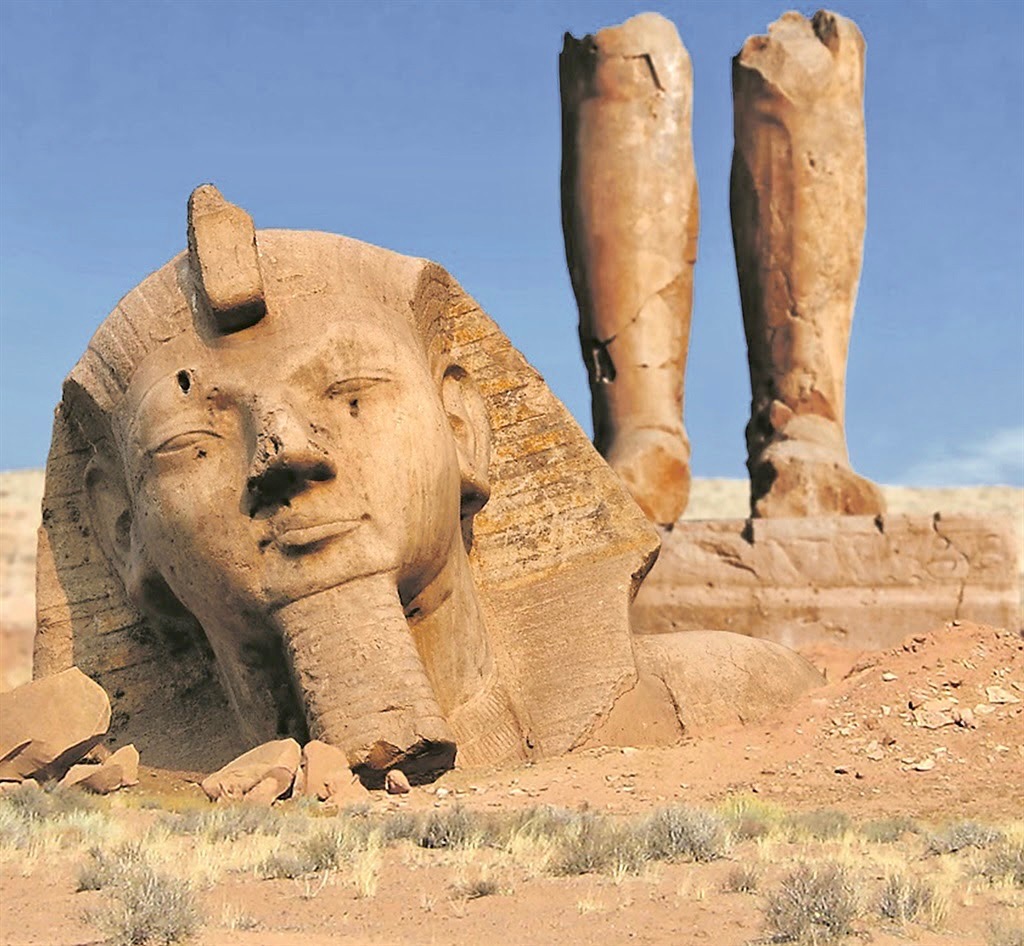Percy Bysshe Shelley. English Romantic poet whose passion was the pursuit of personal love and social justice. These dual inspirations motivated his early social activism. Later, this same passion was channeled into some of the most celebrated poems in English, including a poem about Ramses II of Egypt. (Born Aug. 4, 1792. Died July 8, 1822, drowning at sea near Livorno, Italy in Tuscany)

There are many celebrated stories in the much heralded life of Shelley. Sadly, many of these stories are tragedies, even how his life ended. Shelley famously drowned at a young age in a boating mishaps off the coast of Italy. Yet, through all of it, Shelley’s literary ambition kept him writing and we continue to be his beneficiaries. On spark to his writing was that Shelley was very competitive. It was not unusual for the members of Shelley’s literary circle to challenge each other to write competing works of literature. In 1816, for example, Percy, along with his wife Mary Shelley, Lord Byron and others spent a rainy afternoon in Geneva Switzerland. They challenged each other to tell ghost story. Out of this storied competition Frankenstein was born, at the hand of Mary Shelley.
Once again, literary greatness emerged from some sort of literary duel. This time, Shelley and his banker friend, Horace Smith, a poet in his own right squared off against each other. They started with a passage from the Ancient Greek historian, Diodorus Siculus. This text described an immense Egyptian statue of “Ozymandyas.” The name “Ozymandyas” came from the Ancient Greek interpretation of Ramesses’ throne name, “Usermaatra.”** Inspired by Didorus, Shelley and Smith both agreed to a poetry slam — writing competing poems on this same topic — the collapses colossal statue of Ramses II
** [Drilling down on specifics of Ramses II name — just to be clear. According the Wikipedia, ““Ramesses II ( c. 1303–1213 BC) is known as Ozymandias in Greek sources (Koinē Greek: Οσυμανδύας, romanized: Osymandýas), from the first part of Ramesses’s regnal name, Usermaatre Setepenre.” ]
Clearly, Ozymandia = Ramses II. But who was the clear winner of the poetry slam? Well, you can decide. Here is Shelley’s “Ozmandia” was first published in the London newspaper, the Examiner on January 11, 1818:
OZYMANDIA (Shelley)
I met a traveller from an antique land
Who said: "Two vast and trunkless legs of stone
Stand in the desert . . . Near them, on the sand,
Half sunk, a shattered visage lies, whose frown,
And wrinkled lip, and sneer of cold command,
Tell that its sculptor well those passions read
Which yet survive, stamped on these lifeless things,
The hand that mocked them, and the heart that fed:
And on the pedestal these words appear:
My name is Ozymandias, king of kings:
Look on my works, ye Mighty, and despair!'
Nothing beside remains. Round the decay
Of that colossal wreck, boundless and bare
The lone and level sands stretch far away

There is literary speculation that this 1818 poetic interest in Ozymandia was related to the impending, and much advertised, 1819 arrival of a fragmented Ramses II statue at the British Museum. This fragment was a HUGE bust that was originally part of an even larger, full body statue of Ramses II in Luxor. The original statue had collapsed and lie in ruins on the ground thanks to the monkey works of Napoleon, such as the French “bullet hole” the French army drilled into the statue’s right chest. Decades later, the British Museum “rescued” the bust above for sterile posterity in London. See pictures below of the original scene of the Egyptian theft.
So, let’s look at Horace Smith’s contribution. Here is his sonnet “Ozymandia”, published in the Examiner, on February 1, 1818:
Ozymandia (Smith)
In Egypt’s sandy silence, all alone,
Stands a gigantic Leg, which far off throws
The only shadow that the Desert knows:—
“I am great OZYMANDIAS,” saith the stone,
“The King of Kings; this mighty City shows
“The wonders of my hand.”— The City’s gone,—
Nought but the Leg remaining to disclose
The site of this forgotten Babylon.
We wonder,—and some Hunter may express
Wonder like ours, when thro’ the wilderness
Where London stood, holding the Wolf in chace,
He meets some fragment huge, and stops to guess
What powerful but unrecorded race
Once dwelt in that annihilated place.
Originally, Smith used the title “Ozymandia,” as did Shelley. Later, Smith gave it a new title. See how this title rolls off the tongue: “On A Stupendous Leg of Granite, Discovered Standing by Itself in the Deserts of Egypt, with the Inscription Inserted Below.” This title is a clue that Smith did not quite have the poetic ear of Shelley.


Related Ramses II articles are on this website (templesandtribes.net) These articles are under “Historic News” in Table of Contents. In addition, under “Travelogue-Egypt” There are other articles on other Ancient Egypt topics. These articles below focus specifically on Ramses II: Aswan Egypt Part I Ramses II Protecting Egypt… Aswan Egypt Part II Ramses II Protecting Egypt… Ramses - Don’t Mess with Moses!
